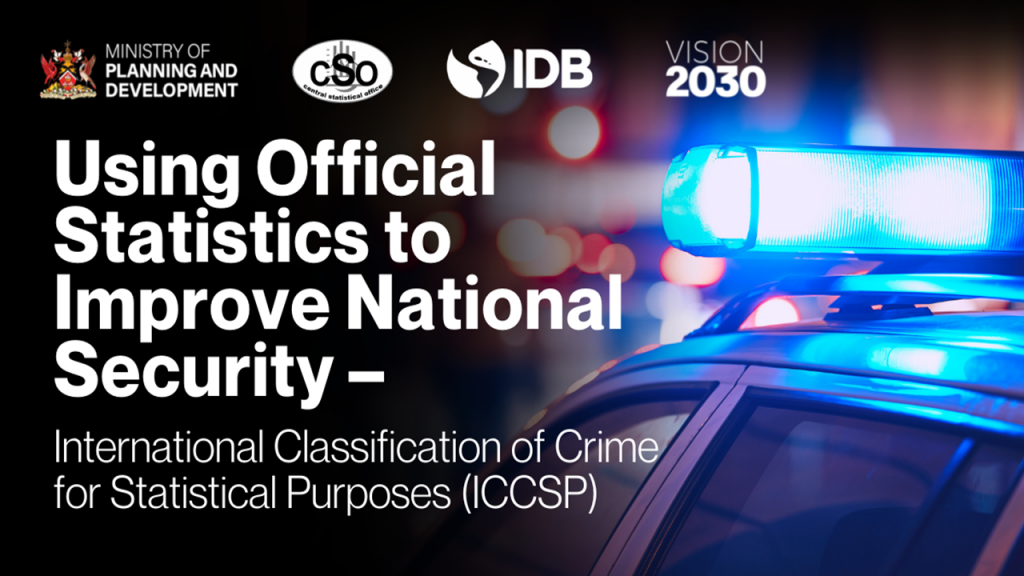Official crime statistics are primarily derived from data collected from crimes reported to the police. It is one of the ways in which a country’s levels of criminal behaviour is analysed. It is understood however that official crime statistics often underestimate actual crime levels as data gathered from surveys indicate that many crimes are simply not reported. This can stem from a number of reasons, such as fear of retaliation, lack of confidence in the criminal justice system, and beliefs that the crime was not severe enough to warrant reporting. The unknown, unreported incidence of crime is referred to in the literature as the ‘Dark Figure’.
Official crime data supports the work of the Trinidad and Tobago Police Service.
In Trinidad and Tobago, data submitted via official crime reports are collected and analysed by the Crime and Problem Analysis (CAPA) branch of the Trinidad and Tobago Police Service (TTPS). A 2016 Inter-American Development Bank’s Crime and Violence in T&T Needs Assessment conducted by the Citizen Security Programme of the TTPS noted that official crime statistics, despite their shortcomings, were necessary to gauge the level of victimization and the distribution of criminal activity across a country.
The standardization of criminal statistics has been difficult due to the variations across countries with regard to their definitions of crime and the crime reporting tendencies present there. The United Nations Office on Drugs and Crime (UNODC) is tasked with providing regularly updated global statistics on criminal justice, crime, drug trafficking and prices, along with data on drug production and use. It also works to strengthen national capacities to produce and disseminate drugs, crime and criminal justice statistics at a local level.
Crime data supports national targets to enhance criminal justice.
In 2015, the UNODC’s International Classification of Crime for Statistical Purposes (ICCS) – a robust set of statistical standards and recommendations developed to enhance the comparability of international crime statistics- was adopted by the United Nations Statistical Commission. The UNODC defines the ICCS as a “formidable tool to improve quality of data on crime and criminal justice at national levels and to support national efforts to monitor SDG targets in the areas of public security and safety, trafficking, corruption, and access to justice.” The use of data mining and analytical techniques alongside data standardization can provide relevant and actionable insight to the causal processes which underlie any variation in criminal activity. This in turn can be used to strengthen investigative efficacy, develop crime prevention policy, and inform criminal justice reform.
During the 2011 State of Emergency in Trinidad and Tobago, the City of Port of Spain, the Diego Martin Regional Corporation, the Boroughs of Arima and Chaguanas, the City of San Fernando, and the San Juan/Laventille Regional Corporation were classified as crime hotspot areas. The United States Department of Justice defines a crime hotspot as “an area that has a greater than average number of criminal or disorder events, or an area where people have a higher than average risk of victimization.” At this level of analysis, criminal phenomena occur in different geographical areas: concentrated points of activity on street corners or specific properties; small, stretched areas such as entire streets, blocks, and sections of a community; or large areas such as parallel blocks and entire communities. These areas are often represented as dots, lines or ellipses that illustrate both the frequency and intensity of criminal activity. While it may be difficult to translate these statistical constructs to three-dimensional spaces that are clearly delineated, the data collected from CAPA can be entered and represented in the Central Statistical Office’s Geographic Information Systems (GIS) and disseminated in order to meet that need.
Statistical data related to criminal activity are often compiled in accordance with legal rather than statistical principles. Differences in definitions and concepts of criminal activity can vary even within the same jurisdiction, making analysis and organisation difficult.
Furthermore, comparability over time can also be problematic due to changes in legislation and classifications of criminal activity. In 2020, the TTPS announced a new initiative that will allow for the submission of electronic reports using an online platform. This must necessarily include clarified terminology to assist users as well as to provide a common framework for analysis. These clarified terms can be derived via the ICCS approach using behavioural and contextual attributes that are universally considered to be an offence in order to classify criminal acts.
The careful adaptation of national legislation and lexicon in accordance with the nomenclature utilized utilised by the ICCS will result in a globally applicable structure aimed at improving analytical capabilities at both the national and international level.
Author: Central Statistical Office


